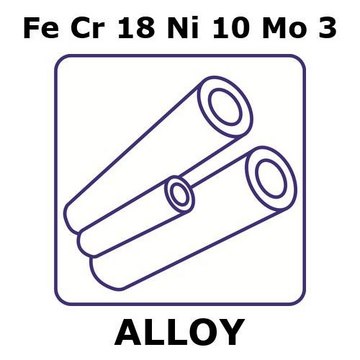ABN1686
Anti-Rootletin
from chicken, purified by affinity chromatography
Synonym(s):
Ciliary rootlet coiled-coil protein
Sign Into View Organizational & Contract Pricing
Select a Size
All Photos(1)
Select a Size
Change View
About This Item
UNSPSC Code:
12352203
eCl@ss:
32160702
NACRES:
NA.41
Recommended Products
biological source
chicken
Quality Level
antibody form
affinity isolated antibody
antibody product type
primary antibodies
clone
polyclonal
purified by
affinity chromatography
species reactivity
human, porcine, mouse
technique(s)
western blot: suitable
isotype
IgY
NCBI accession no.
General description
Rootletin (UniProt: Q8CJ40; also known as Ciliary rootlet coiled-coil protein) is encoded by the Crocc (also known as Kiaa0445) gene (Gene ID: 230872) in murine species. Rootletin is a major structural component of the ciliary rootlet, a cytoskeletal-like structure in ciliated cells that originates from the basal body at the proximal end of a cilium and extends proximally toward the cell nucleus. It contributes to centrosome cohesion before mitosis. In ciliated cells, it is associated with ciliary rootlets, but in non-ciliated cells it is localized between, around and at the proximal ends of the centrioles. It dissociates from the centrioles at the onset of mitosis and re-associates with them at anaphase. Highest expression of Rootletin is found in photoreceptor cells of retina. Lower expressions have been reported in brain, trachea and kidney. In retinal photoreceptors rootlets extend from the basal bodies to the synaptic terminals and anchor endoplasmic reticulum membranes along their length. During embryonic development, it is enriched along the apical domains of neuro epithelium in brain ventricular zone, in primordia of retinal pigment epithelia, and in neural retina. Rootletin contains a globular head domain and a tail domain that consists of extended coiled-coil structures. The head domain may be required for targeting to the basal body and binding to a kinesin light chain. (Ref.: Yang, J., et al. (2002). J. Cell Biol. 159(3): 431-440).
Specificity
This chicken polyclonal antibody detects Rootletin in mouse retina. It targets an epitope within 188 amino acids from the C-terminal region.
Immunogen
His-tagged recombinant fragment corresponding to 188 amino acids from the C-terminal region of murine Rootletin.
Application
Anti-Rootletin Antibody, Cat. No. ABN1686, is a highly specific chicken polyclonal antibody that targets Rootletin and has been tested in Western Blotting.
Research Category
Neuroscience
Neuroscience
Western Blotting Analysis: A representative lot detected Rootletin in Western Blotting applications (Yang, J., et. al. (2002). J Cell Biol. 159(3):431-40).
Immunohistochemistry Analysis: A representative lot detected Rootletin in Immunohistochemistry applications (Yang, J., et. al. (2002). J Cell Biol. 159(3):431-40; Sun, X., etl al. (2016). Proc Natl Acad Sci USA. 113(21):E2925-34; Yadav, S.P., et. al. (2016). Development. 143(9):1491-501; Pawlyk, B.S., et. al. (2016). Gene Ther. 23(2):196-204; Sun X., et. al. (2012). Cilia. 1(1):21; Liu, X., et. al. (2007). Proc Antl Acad Sci USA. 104(11):4413-8; Bahe, S., et. al. (2005). J Cell Biol. 171(1):27-33; Yang, J., et. al. (2005). Mol Cell Biol. 25(10):4129-37; Hong, D.H, et. al. (2003). Invest Ophthalmol Vis Sci. 44(6):2413-21).
Immunohistochemistry Analysis: A representative lot detected Rootletin in Immunohistochemistry applications (Yang, J., et. al. (2002). J Cell Biol. 159(3):431-40; Sun, X., etl al. (2016). Proc Natl Acad Sci USA. 113(21):E2925-34; Yadav, S.P., et. al. (2016). Development. 143(9):1491-501; Pawlyk, B.S., et. al. (2016). Gene Ther. 23(2):196-204; Sun X., et. al. (2012). Cilia. 1(1):21; Liu, X., et. al. (2007). Proc Antl Acad Sci USA. 104(11):4413-8; Bahe, S., et. al. (2005). J Cell Biol. 171(1):27-33; Yang, J., et. al. (2005). Mol Cell Biol. 25(10):4129-37; Hong, D.H, et. al. (2003). Invest Ophthalmol Vis Sci. 44(6):2413-21).
Quality
Evaluated by Western Blotting in mouse retina tissue lysate.
Western Blotting Analysis: A 1,000 dilution of this antibody detected Rootletin in 10 µg of mouse retina tissue lysate.
Western Blotting Analysis: A 1,000 dilution of this antibody detected Rootletin in 10 µg of mouse retina tissue lysate.
Target description
~227 kDa observed; 226.95 kDa calculated. Uncharacterized bands may be observed in some lysate(s).
Physical form
Affinity Purified
Purified chicken polyclonal antibody in PBS with 50% glycerol and without azide.
Storage and Stability
Stable for 1 year at -20°C from date of receipt.
Handling Recommendations: Upon receipt and prior to removing the cap, centrifuge the vial and gently mix the solution. Aliquot into microcentrifuge tubes and store at -20°C. Avoid repeated freeze/thaw cycles, which may damage IgG and affect product performance.
Handling Recommendations: Upon receipt and prior to removing the cap, centrifuge the vial and gently mix the solution. Aliquot into microcentrifuge tubes and store at -20°C. Avoid repeated freeze/thaw cycles, which may damage IgG and affect product performance.
Other Notes
Concentration: Please refer to lot specific datasheet.
Disclaimer
Unless otherwise stated in our catalog or other company documentation accompanying the product(s), our products are intended for research use only and are not to be used for any other purpose, which includes but is not limited to, unauthorized commercial uses, in vitro diagnostic uses, ex vivo or in vivo therapeutic uses or any type of consumption or application to humans or animals.
Not finding the right product?
Try our Product Selector Tool.
Storage Class
10 - Combustible liquids
wgk_germany
WGK 2
Certificates of Analysis (COA)
Search for Certificates of Analysis (COA) by entering the products Lot/Batch Number. Lot and Batch Numbers can be found on a product’s label following the words ‘Lot’ or ‘Batch’.
Already Own This Product?
Find documentation for the products that you have recently purchased in the Document Library.
Our team of scientists has experience in all areas of research including Life Science, Material Science, Chemical Synthesis, Chromatography, Analytical and many others.
Contact Technical Service








